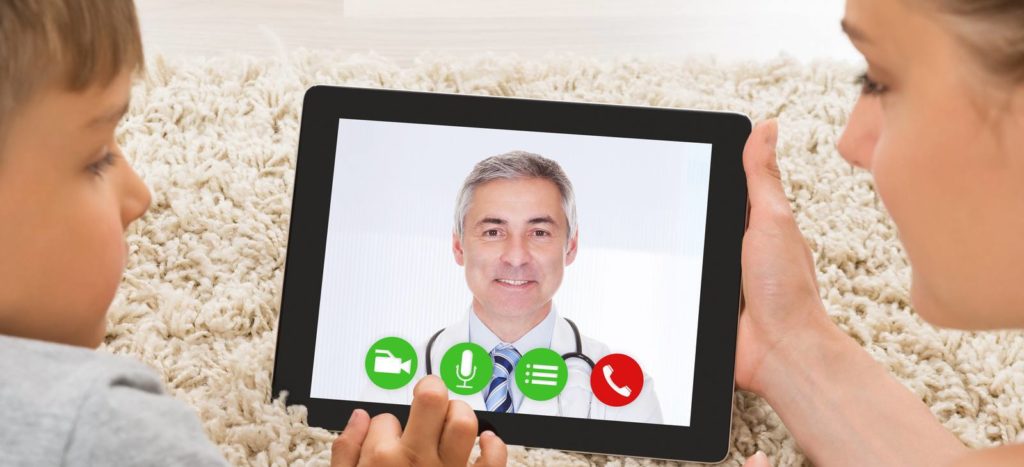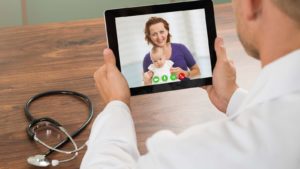
It is 8 pm on a school night. Just about bedtime for the kids. Then one of your children vomits. You think it might have been a one time thing and you start thinking back to what they ate recently. Then it starts happening again. And again. And again. You now realize this is probably going to be a long night.
But then there is so much vomiting, and coughing with vomiting, and their normally beautiful little faces are bright red, sweaty, and now you notice some little red dots on the eyelids and other areas of the face. At this rate they can't keep anything down and they are looking like they are going to get dehydrated. What is going on? They look so uncomfortable and those red dots on the face are concerning you. You begin to wonder if you should bring them into the ER.
This "Should I stay or Should I go?" question in common. I would say that many if not most parents have had times where they stressed over deciding whether or not to take a child in to be seen immediately or try and wait it out. It could be something really serious or it could be a short lived problem that will go away on its own soon. It might be very contagious or not so much. How do you find out? Well many people start with an internet search. For these red dots on the face you might find such things as ITP, a blood-clotting problem, or even meningitis, and infection around the brain as causes of red dots on the body. Now you might feel even worse.
You could go to the ER as it is likely not much else is open. But depending on your insurance, or lack of it, it could cost you thousands of dollars to possibly be told it is not something serious, that the red dots are fairly common after vomiting, and to get a prescription for some nausea & vomiting medicine.
Another option would be to see a medical provider through a telemedicine evaluation. Here you can be seen by an ER, Urgent Care, Family Practice, or Pediatrics trained healthcare provider from the comfort of your home. No need to take your already unhappy child and subject them to traveling, waiting in a bright, cold, and possibly crowded, noisy waiting room and then having to interact with multiple strangers in order to get your questions answered and your child feeling better. Plus, you possibly would have needed to bring your other non-sick children, guaranteeing they would be sleep deprived for school the next day.
Through a telemedicine encounter, your child can stay at home surrounded by caring family and interacting with only one other stranger, the doctor, nurse practitioner, or physician-assistant. As long as the suspected diagnosis is not a serious one, your mind is put at ease, everyone else can sleep better, and any needed prescriptions can be electronically sent into the nearest pharmacy of your choice, with no need to drop off paper prescriptions.
We take care of many other parts of our lives online from shopping to banking. We are now moving into an age where we can also manage our healthcare online too.

The evaluation normally consists of a Skype or FaceTime-like video interaction over secure, encrypted video software. It is helpful to have a thermometer and any other medical devices you may have such a heart rate monitors, pulse oximeters, or if you have a diabetic child, the blood sugar monitor ready to go.
Once registered in the application and care is requested, your child will be placed in a "Virtual Waiting Room". From there the healthcare provider will first look at your medical history and any other information provided. You will then receive a notification to join in the video visit with the provider.
Upon making the connection, the provider will ask some basic questions to make sure they are seeing the correct patient and then dive into some more detailed questions about the problem. Then comes the part that many are not used to: You and your child need to participate in providing a quality physical exam. This usually starts with any vital signs such as temperature. But then it leads into a more detailed physical exam.
The medical provider will guide you through various parts of the exam from getting close to the camera to show the back of the throat, to moving various body parts or breathing a certain way to make sure everything is working okay, to having you-the parent- help examine a child's belly by having them lay on their back while you are guided in gently pushing inwards on certain parts of the stomach.
Depending on the situation, this might also be the time when you will be asked to go get your telemedicine device such as the ENTO camera (reviewed in another post HERE), CliniCloud device, or the soon to be released to patients TytoCare device.
These devices could allow the telemedicine provider to do things like look directly at the eardrums, see a rash up close, and listen to the heart and lungs. These would add to the range of medical conditions that can be accurately diagnosed by a telemedicine exam.
The list is rather long. Except for emergencies, nearly any situation can be assessed to determine the most appropriate and affordable method of managing things. Answering the "Should I stay or should I go?" question is just one part of it. A sore throat can be evaluated to determine how likely it is to be a strep throat, an injured ankle can be seen to determine if an x-ray is needed among many others. Here is a small summary of some of the categories:
Yes, we can see children while at school if the school participates in providing a more convenient and cost-effective method for getting their students seen. With the assistance of the school nurse, teacher, or coach, and using our Mobile Telemedicine Examination Kit, we would be able to see your children right from there without you needing to leave work or make arrangements to pick them up or get an appointment. We could see illnesses, do concussion assessments, and take a look at painful ears all without your child needing to leave the school grounds. You can take a look at our School-based Telemedicine page to get a little overview of that program.
If you need a convenient and cost-effective way to obtain a minor medical / urgent care evaluation for your child, Care on Location can be there for you and your family. Register today to save yourself some stress and time when the situation arises and care is needed.